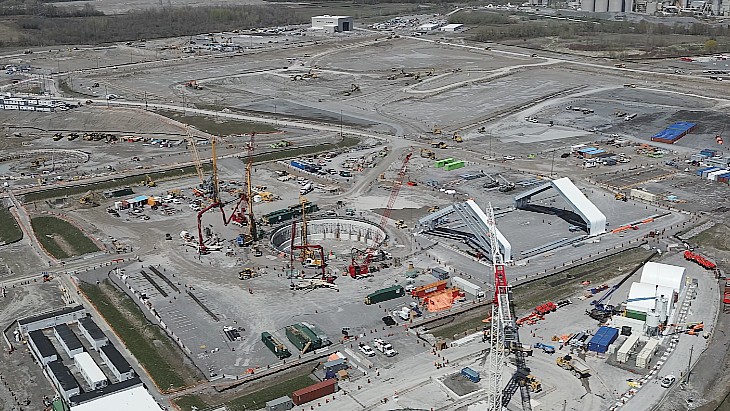Nuclear research to benefit from US supercomputer milestones
.jpg)
AI nuclear search company Atomic Canyon said it will work with the Department of Energy laboratory to build a safe, efficient open-source AI model for the nuclear sector, using ORNL's Frontier supercomputer to train the company's AI model to understand complex nuclear terminology. This collaboration is a "significant milestone" marking the development of the first AI model tailored for nuclear data and content, the company said.
The company aims to open-source nuclear sector terminologies, helping to develop a nuclear AI infrastructure to build upon and to provide a powerful tool for efficient data navigation, document indexing, performance improvement and cost savings. Its technology has been trained on millions of publicly available documents from the US Nuclear Regulatory Commission's Agency-wide Documents Access and Management System - known as ADAMS - and will use sentence-embedding models, algorithms which convert written sentences into numerical representations to allow AI to grasp nuclear terminology and accurately discern information. This deeper understanding makes the AI more effective and helps prevent AI "hallucinations" and biases during search and data analysis, according to Atomic Canyon.
Atomic Canyon's technology is tailored to the nuclear sector, CEO and founder Trey Lauderdale said. "Collaborating with ORNL's premier supercomputing facilities such as Frontier will help our platform understand complex nuclear concepts, removing a major barrier to AI implementation in the nuclear sector. Moreover, our open-source approach will encourage transparency and collaboration among nuclear stakeholders and innovators focused on safety and security. Our goal is to help the world's best and brightest have the information and technology they need to help navigate the climate and energy crisis."
Aurora goes exascale
ORNL's Frontier, which will play a pivotal role in the collaboration between Atomic Canyon and ORNL, was the first computer in the world to achieve exascale computing performance. Argonne National Laboratory's Aurora supercomputer has now become the second computer in the world to pass the exascale threshold, measuring over a quintillion calculations per second in the Top500 list announced on 13 May at the ISC High Performance 2024 conference in Hamburg, Germany.
.jpg)
The Aurora supercomputer (Image: Argonne National Laboratory)
Aurora debuted in the Top500 list, which is published twice a year, in November 2023. The computer has now registered 1.012 exaflops using 87% of the system's 10,624 nodes, retaining its spot as the second fastest supercomputer in the world after Frontier. Aurora also earned the top spot in a measure of AI performance, achieving 10.6 exaflops on the HPL-MxP benchmark.
Aurora's speed and artificial intelligence capabilities will transform scientific research and enable breakthroughs in some of the world's most pressing challenges, from climate and materials science to energy storage and fusion energy, the lab said.
"Hitting exascale is a huge milestone but enabling groundbreaking science is the ultimate goal," said Susan Coghlan, project director for Aurora at the Argonne Leadership Computing Facility. "The new performance numbers, along with some promising runs from our early science teams, give us a glimpse of what will be possible with Aurora."
_92619.jpg)

_84504.jpg)








